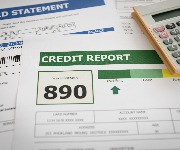Mad Mortgages For Maniacs!

These home loans may look dreamy, but can easily turn into nightmares!
When you borrow money, what should be your key goal?
Many people would claim that the best thing to do would be to find the lowest monthly repayments, but they'd be very wrong. In truth, your main goal is to minimise the total amount repayable (TAR): the sum that you've borrowed plus interest and other charges. In other words, your objective is to keep your interest bill and other charges to a minimum.
(However, deciding which deal to go for isn't easy, largely because the choice is so vast. For example, you can choose from over 8,500 mortgages, 1,300 credit cards and 100 different personal loans. This vast array of products confuses consumers, causing many to suffer "paralysis by analysis", leaving them unable to choose the perfect product to suit their needs.)
So, it's a mistake to choose the loan which has the lowest monthly repayments, and this applies doubly when you're choosing a mortgage. For example, take a look at these three home loans, which are currently topping the Best Buy tables produced by independent financial researcher Moneyfacts:
Best Buy fixed-rate mortgages with extended lock-ins
|
Lender |
Fixed rate |
Period of fix |
Redemption |
Redemption |
Follow-on |
|---|---|---|---|---|---|
|
Portman BS |
1.79 | To 30/06/08 | To 30/06/12 | 7 / 7 / 7 / 6 / 4 / 2 | Base rate+1.99 |
|
Leeds BS |
1.89 | To 30/09/08 | To 30/09/12 | 7 / 7 / 7 / 6 / 6 / 4 | 6.50 |
|
Market Harborough BS |
2.25 | 2 years | 5 years | 7 / 7 / 7 / 5 / 4 | 6.54 |
As these three home loans are very similar, I'll only look at the first in detail. What I'm about to show you is called 'payment shock': when a borrower's monthly repayments suddenly shoot through the roof once a special-rate deal has ended.
With the Portman BS mortgage shown above, you enjoy an incredibly low rate of 1.79% a year for roughly two years. Given that the Bank of England's base rate is 4.5% a year, you can see how mouth-watering this rate is. However, it comes with strings (no, handcuffs) attached, because after your delightful fixed rate ends, you're locked in to paying a much higher rate (currently 6.49% a year) for the next four years.
In other words, you have two years of ultra-low monthly repayments, followed by four years of hardship as your repayments rocket. Of course, if you want to buy yourself out at any time, you face stiff penalties, ranging from 7% of your loan in the first three years to 2% in the final year. Ouch!
Now let's look at a worked example to demonstrate just how devastating this payment shock can be. Let's say that you have a £100,000 interest-only mortgage: this is how your repayments change after your two glorious low-rate years are up:
- Monthly repayments for first two years: £149.17
- Monthly repayments for next four years: £540.83
- Difference: £391.67 a month (£4,700 a year)
- Percentage increase: 263%
So, once your salad days are over, you need to find an extra £4,700 a year to meet your increased interest payments for four long, hard years, thanks to your interest rate almost quadrupling. Aaargh!
As any villain will tell you, it's never a good idea to end up in handcuffs, so I'd urge you to steer clear of home loans which lure you in with low rates and then lock you into unattractive rates for years to come. I call them "short-term cherries, long-term lemons"!
However, if you do possess a high degree of financial discipline, you could put aside the difference each month between these ultra-low mortgage repayments and the full standard variable rate repayments. That way, when your rate and repayments go through the roof, your household budget won't be fatally wounded.
More: Use lovemoney to compare mortgages, compare savings accounts and compare credit cards!
Most Recent
Comments
Be the first to comment
Do you want to comment on this article? You need to be signed in for this feature








